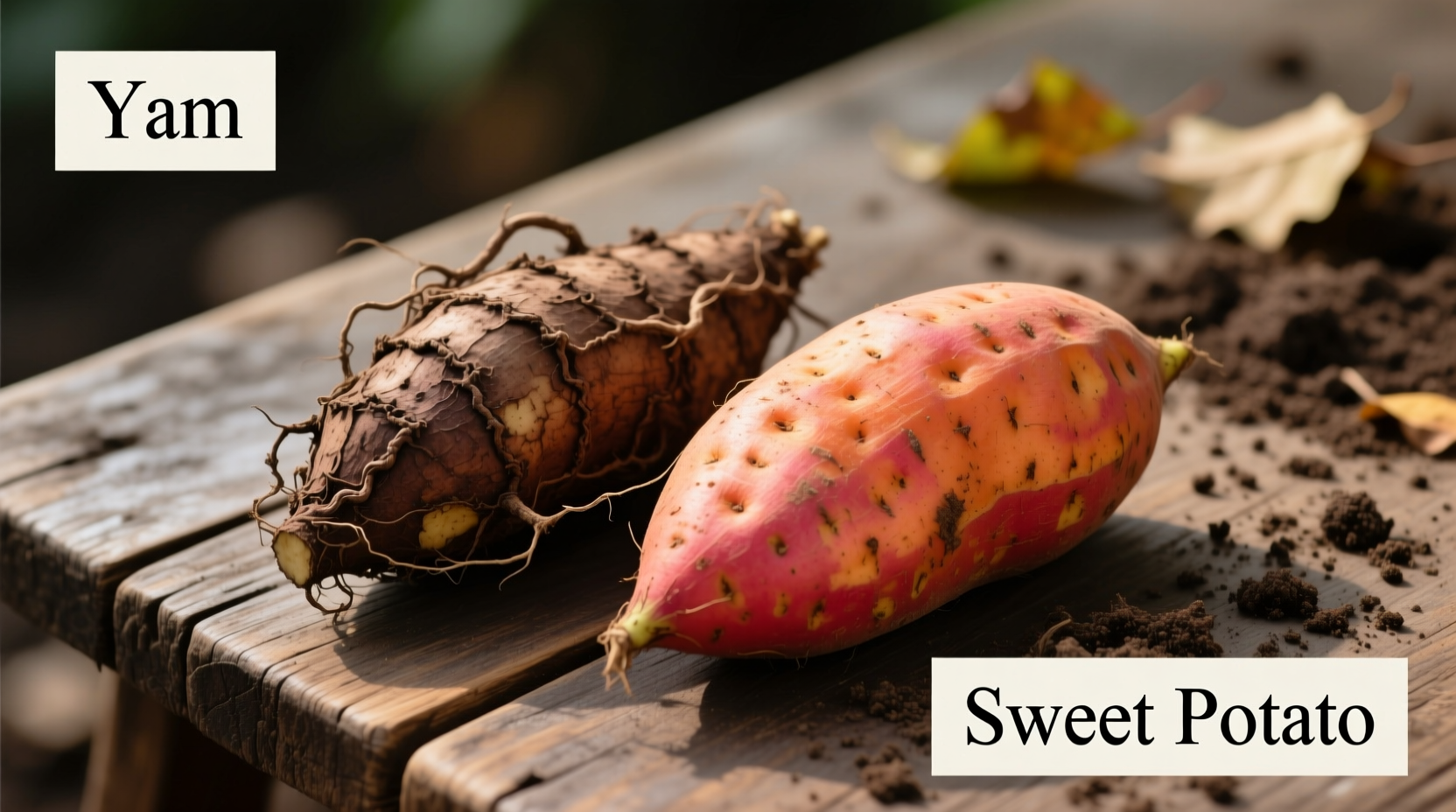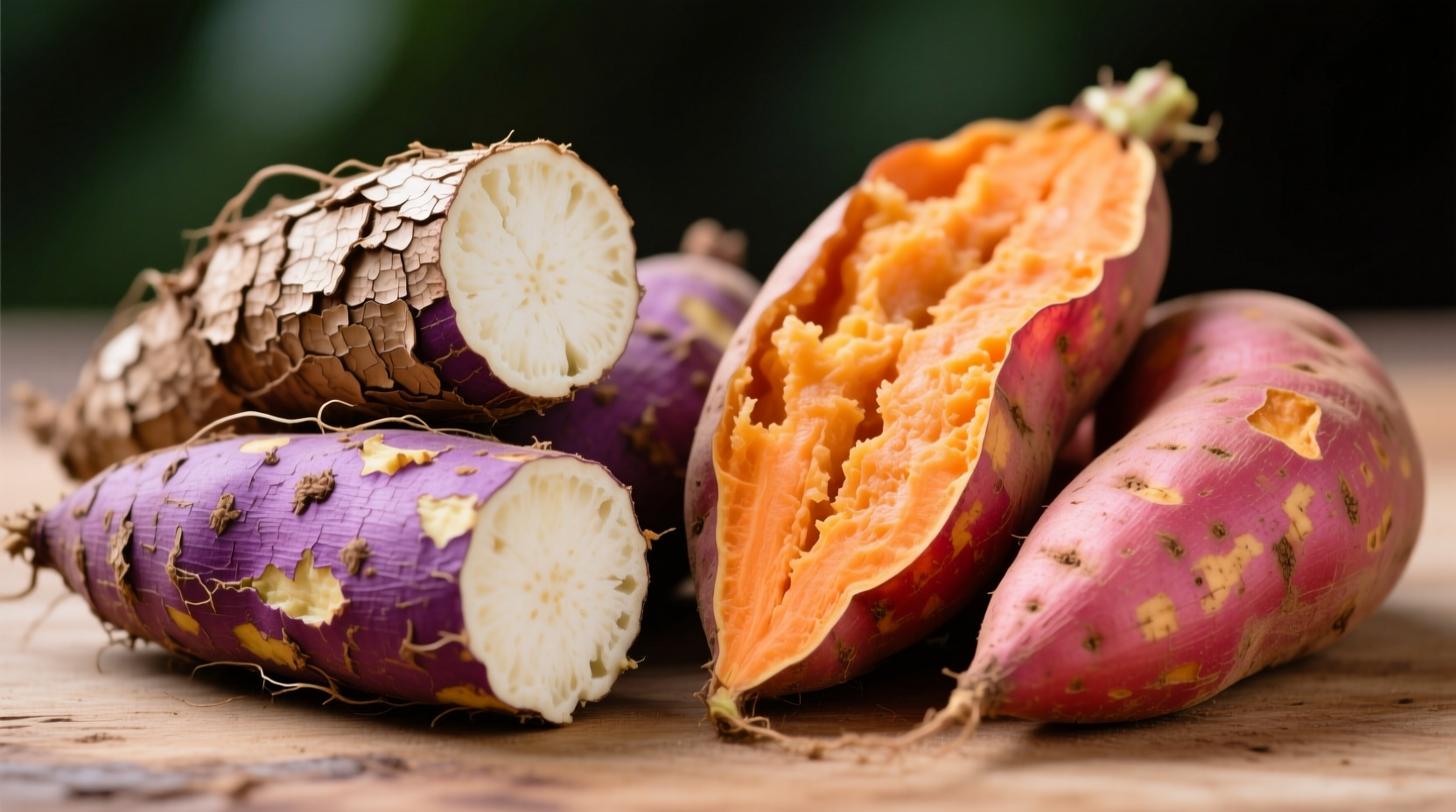Confused about whether yams and sweet potatoes are the same? You're not alone. This common misconception affects millions of shoppers who pick up what's labeled as "yams" in American grocery stores, only to discover they've actually selected sweet potatoes. Let's clarify this botanical mix-up once and for all and help you identify these vegetables correctly.
Why the Confusion Exists: A Historical Timeline
The yam-sweet potato confusion primarily stems from marketing practices in the United States. When soft varieties of sweet potatoes were introduced to the American market, producers needed to distinguish them from the firmer varieties already available. In the 1930s, shippers began labeling the softer sweet potatoes as "yams" to differentiate them, borrowing the African word "nyami" for the starchy tuber. This marketing tactic stuck, despite the two vegetables being completely different species.
| Characteristic | True Yam | Sweet Potato |
|---|---|---|
| Scientific Classification | Dioscorea species (Dioscoreaceae family) | Ipomoea batatas (Convolvulaceae family) |
| Origin | Africa, Asia | Central/South America |
| Texture | Starchy, dry, less sweet | Moist, sweet (varies by variety) |
| Skin Color | Brown, bark-like, often rough | Thin, ranging from yellow to red to purple |
| Flesh Color | White, yellow, or purple | White, orange, or purple |
| Nutritional Profile | Higher in calories and carbohydrates | Higher in vitamin A, vitamin C, and fiber |
| Availability in US | Rare, found in specialty/international markets | Widely available (often mislabeled as yams) |
Identifying True Yams vs. Sweet Potatoes
When shopping, understanding the visual differences can prevent confusion. True yams have a rough, scaly exterior that resembles tree bark, while sweet potatoes have smoother skin. Yams can grow up to several feet long and weigh over 100 pounds in their natural habitat, though they're typically smaller in markets. Sweet potatoes come in various shapes and sizes, with the familiar orange-fleshed varieties being most common in the United States.

Nutritional Differences You Should Know
From a nutritional standpoint, sweet potatoes significantly outperform true yams in several key areas. According to the USDA FoodData Central database, a medium sweet potato provides more than 400% of your daily vitamin A requirement, while yams contain minimal amounts. Sweet potatoes also offer more vitamin C, potassium, and dietary fiber. Yams, however, contain slightly more potassium and manganese. This nutritional disparity explains why sweet potatoes have gained popularity among health-conscious consumers.
Where to Find Each Vegetable
In the United States, what's labeled as "yams" in supermarkets are almost always sweet potatoes. True yams are rarely found outside of specialty international markets, particularly those catering to African or Caribbean communities. If you're looking for authentic yams, check ethnic grocery stores that specialize in West African or Caribbean products. Sweet potatoes, meanwhile, are widely available year-round in most grocery stores across North America.
Culinary Applications Around the World
Understanding the distinction matters for cooking. In West African and Caribbean cuisines, true yams are often boiled, fried, or pounded into fufu. Their neutral flavor makes them ideal for savory dishes. Sweet potatoes, with their natural sweetness, work well in both savory and sweet preparations. The orange-fleshed varieties popular in the US are excellent for roasting or mashing, while purple-fleshed sweet potatoes from Asia are often used in desserts. Chefs in Latin American cuisine (where sweet potatoes originated) use them in both traditional and contemporary dishes, taking advantage of their versatility.
Practical Shopping Tips
When selecting sweet potatoes (often mislabeled as yams), look for firm roots without soft spots or bruises. Store them in a cool, dark place—but not in the refrigerator, as cold temperatures can negatively affect their texture and flavor. Unlike true yams, sweet potatoes will last 3-5 weeks when stored properly. If you're specifically seeking true yams for an authentic recipe, ask at specialty markets about "nyami" or "igname" to avoid confusion.











 浙公网安备
33010002000092号
浙公网安备
33010002000092号 浙B2-20120091-4
浙B2-20120091-4